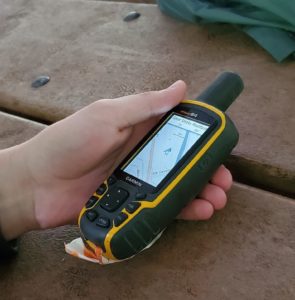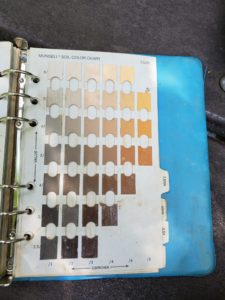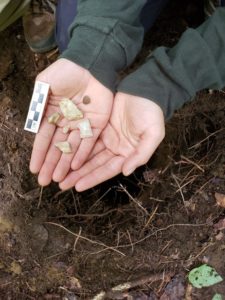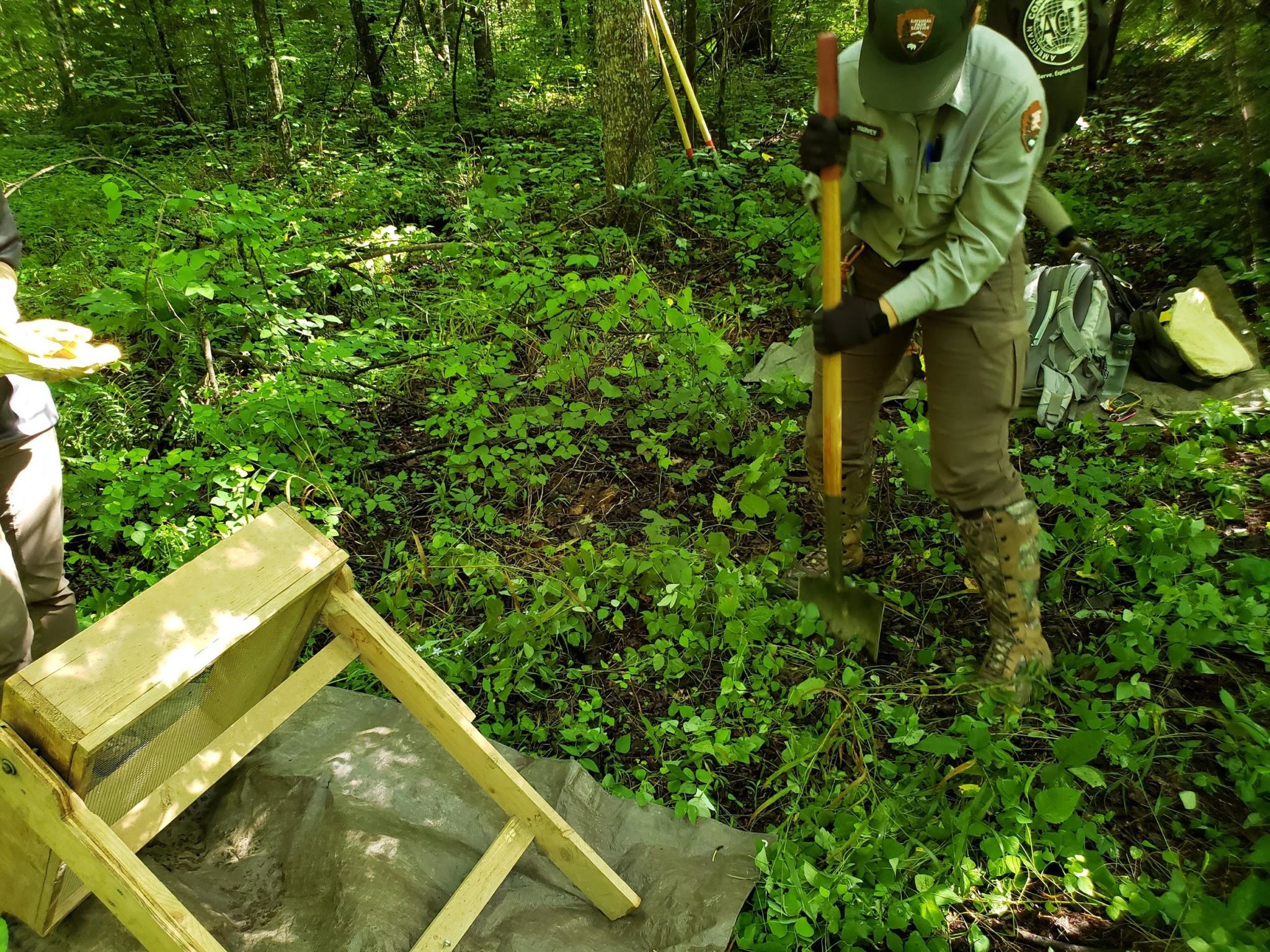GSMNP high school intern Staci Mann describes the experience of working with park archaeologists to conduct a survey, using shovels, tarps, a GPS and a sifter. The GSMNP summer high school internship program enables students to learn more about NPS careers and be involved in the work of the park.
by Staci Mann
Jefferson County High School
Jefferson City, Tennessee

On the morning we were to work with the park archaeologist, the interns and I piled into the car to head to Metcalf Bottoms, the area picked out for the day.
The park archaeologist, Allison Harvey, explained how a location is selected for what is called a phase-one survey.
The goal of this survey is to see if there is anything culturally significant within the range of where construction or other building may take place. Using a GPS, we found our spots to dig.
Our supplies included rounded shovels, sifters and tarps.
The Digging Commences

After taking a “before” picture, we started to dig the hole, which was 35 centimeters (about 14 inches) in diameter and a 100 centimeters (about 39 inches) deep.
Each shovel full of dirt was sifted to look for anything of significance — which could be anything from charcoal to pieces of stone tools.
The photo at the top shows one of the GSMNP archaeologists digging and the sifter.
Everything we found was bagged and labeled for documentation.
It became surprisingly more difficult to dig as we got deeper because we had to keep the cylindrical shape and depth as precise as possible.
The dirt layers were evaluated using a Munsell chart, which evaluates the soil color at each level.
The Results
After six hours of hard work, we had collected two pieces of charcoal and a piece of quartzite.

We took the dirt that piled up on the tarps and packed it back into the holes and collected all of our supplies.
The results of our trip were small but still significant to the survey overall and we all had fun in the process
Reflection
Working with the archaeologists was an unforgettable experience, and I respect what they do to protect and preserve the culture within the park.
I could tell that these people truly knew the significance of their research and how it impacts what we know about the parks history.
***
For six weeks, the interns worked with rangers, Teachers in the Parks and volunteers on projects in the park to learn more about GSMNP and to get a feel of what being a park ranger is like.
Sixteen students from North Carolina and Tennessee participated in the program this summer.
Friends of the Smokies has helped support the GSMNP High School Internship Program for 17 years, initially providing the salaries for the interns and then helping fund the program staff salaries. The program is funded in part by the American Conservation Experience (ACE).
Several of this summer’s interns have written guest posts and compiled photos of their experiences for the FOTS blog. All the photos in this post were taken by the Tennessee interns.
A special thanks to Ranger Jessica Snow, who coordinated the Tennessee interns, and Ranger Erin Lamm, who coordinated the North Carolina interns, for their assistance with the interns’ blog posts.
You can support the GSMNP high school summer internship program or support other education programs that FOTS funds, including Teachers in Parks, Parks as Classrooms, the Kathryn McNeill Endowment that funds an education specialist, and the Park Liaison program at the Cherokee School.

